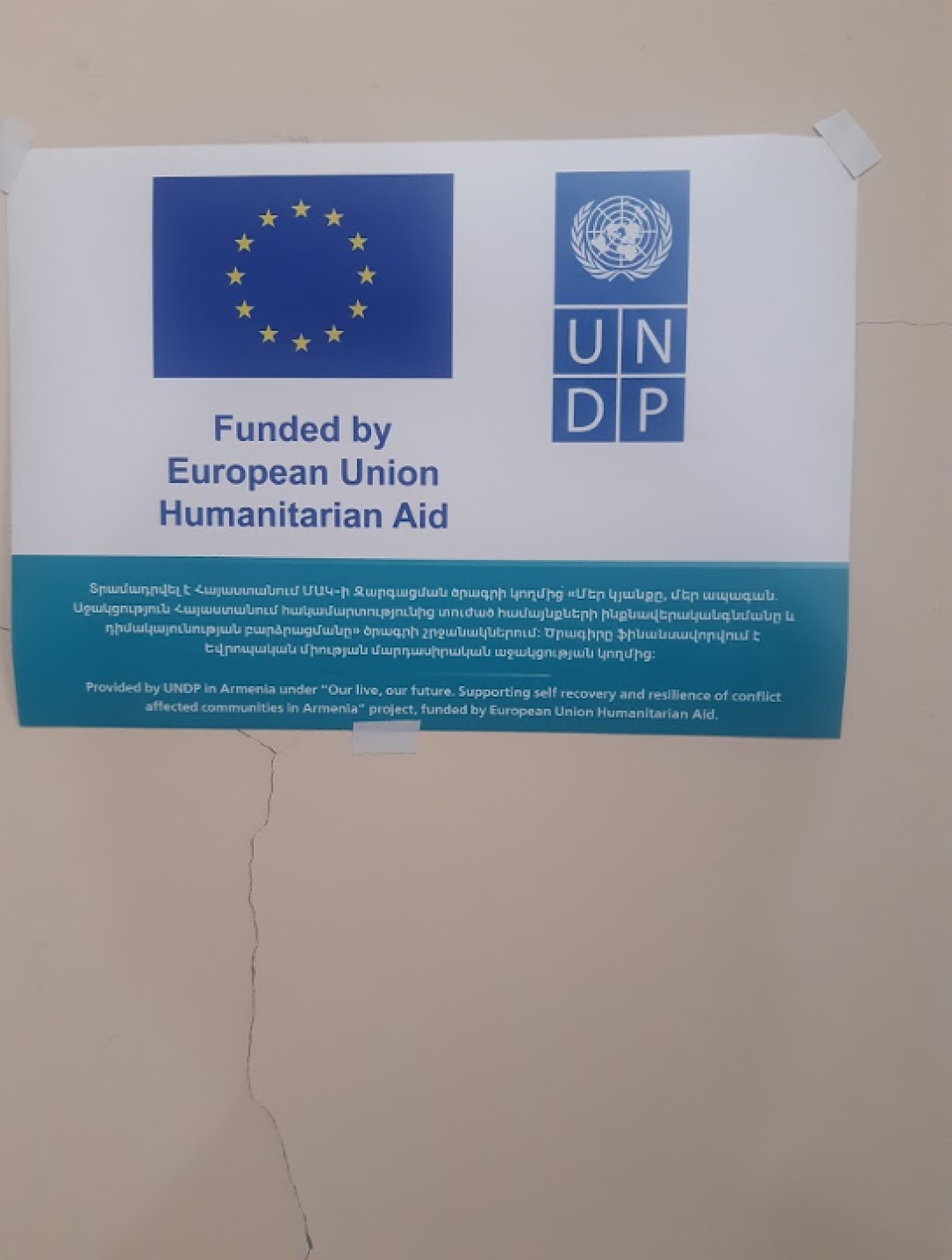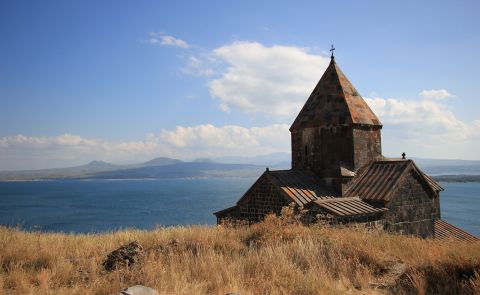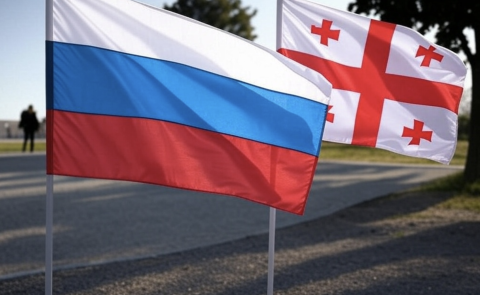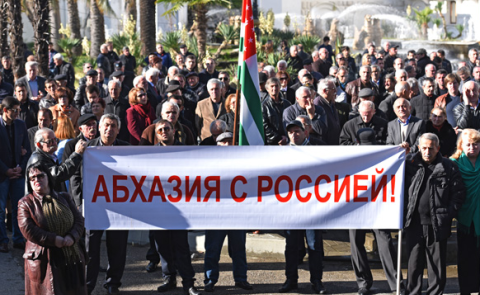
Two Years After the War: What Are the EU and International Organisations Doing to Make Armenia More ‘Resilient’?

Until recently, Thijs Korsten worked as a Junior Research Fellow at the Institute of Caucasus Studies in Jena (Germany). He is also the Caucasus Regional Editor at media platform Lossi 36.
Armenia in a precarious limbo
When I visited Yerevan in February last year, just a week before Putin’s large-scale attack on Ukraine, experts explained there was little scope for movement in Armenia’s foreign policy. Following defeat at the hands of Azerbaijan in the Second Nagorno-Karabakh War (September–November 2020), they sensed that the precariously re-elected Pashinyan government was locked firmly in the embrace of Russian security support.
Last October I again travelled to Armenia, including its southern provinces of Vayots Dzor and Syunik, and the situation could not be more different. Following the inaction on the part of Russia and the Collective Security Treaty Organisation (CSTO) during the escalation of 12–14 September (killing at least 287 soldiers), Armenians began to actively question the Russian role. “Armenia has understood that, at least at this point, when Russia is preoccupied with Ukraine,” says political analyst Tigran Grigoryan, “the Russian deterrent isn’t working.”
Travelling by marshrutka through Armenia’s southern provinces, I was struck by the uneasy coexistence of Western and Russian security actors. I passed Russian peacekeeping trucks and cars of FSB border guards, but also encountered vehicles of the OSCE needs assessment team and the new EU Monitoring Capacity to Armenia (EUMCAP), both of which were dispatched in the wake of the latest clashes in the Armenian-Azerbaijani border zone.
Both short-term missions were a successful result of Yerevan’s efforts to diversify its foreign policy vectors and add balance to Armenia’s reliance on Russian security architecture, explains Grigoryan. On 23 January, EU foreign ministers are to discuss a proposal for new, two-year monitoring mission to Armenia’s border regions.
With Russia bogged down in Ukraine, Azerbaijan has sought to coerce Yerevan into a ‘peace’ deal to end a conflict that it sees, in principle, as already resolved, by violently destabilising the Armenian-Azerbaijani border zone. The EU and US have, in response, shored up their involvement through shuttle diplomacy, especially since the outbreak of the war in Ukraine.
More recently, tensions on the ground have shifted from the international border back to the Nagorno-Karabakh conflict zone, culminating in the closure of the Lachin Corridor. As a result of the tense situation created by government-sponsored Azerbaijani ‘eco-activists’ protesting on the road, the vital link between southern Armenia and the Armenian-inhabited parts of Karabakh has remained largely closed since 12 December. The blockade is causing a humanitarian crisis in Nagorno-Karabakh.
Relations between Russia and Armenia have soured drastically. At the end of November, Prime Minister Nikol Pashinyan harshly criticised the Russia-led Collective Security Treaty Organization (CSTO) for being unwilling to take a political stance against Azerbaijan. At a December meeting with President Putin, Pashinyan openly stated that “the Lachin Corridor is not under the control of the Russian peacekeepers.” In addition, on 10 January 2023, Pashinyan said that Armenia will not host CSTO military exercises in 2023, contradicting earlier announcements by the Russian Ministry of Defence.
In spite of these developments, it remains “unthinkable at this point, despite repeated calls from liberal and nationalist circles, that Armenia will make a geopolitical turn to the West anytime soon,” notes journalist Hovhannes Nazaretyan. Armenia cannot expect much more from Western involvement, says Nazaretyan, than “to make any future attack by Azerbaijan costly for that country, and possibly to balance Russia’s real or perceived interests.”
Fears of Russian–Azerbaijani convergence
In the negotiations for a ‘peace treaty’ between the two sides, Armenia still hesitatingly favours Russia’s mediation. Russia’s proposals are “more acceptable both for the Armenian government and for the population in Armenia and Nagorno-Karabakh,” says Grigoryan, “because these proposals envisage the freezing of the issue of Nagorno-Karabakh.” By contrast, the mediation track facilitated by the US and EU does not mention Nagorno-Karabakh as an entity or conflict zone, in line with Azerbaijan’s wishes.
But this is complicated by the ‘corridor issue’. Armenia indeed fears that Russia shares Azerbaijan’s interest in an extraterritorial transport corridor, which would cut right through southern Armenia without Armenian checkpoints, in order to connect the exclave Nakhchivan to the rest of Azerbaijan. “Russia is in a dire need of alternative roads and infrastructure that would connect its market with the markets of countries like Turkey,” explains Grigoryan.
Armenians sense that Russian officials have been “pushing forward the Azerbaijani interpretation.” A month after I spoke with analyst Tigran Grigoryan, the Secretary of the Security Council of Armenia indeed openly said that Russia’s support for Azerbaijan’s ‘corridor logic’ is the primary reason behind the current blockade of Nagorno-Karabakh.
The linking of the Nagorno-Karabakh conflict with regional geo-economics produces contradictory positions for Armenia. If, in a quid pro quo, Russia and Azerbaijan equate the re-opening of the Lachin Corridor in Azerbaijan with the opening of a new Zangezur Corridor in southern Armenia, then Armenia is compelled to rely on EU and US mediation.
Perceiving the Armenian side as weak and unreliable, Azerbaijani President Aliyev, meanwhile, said at the end of November that he is now only interested in communicating directly with the Russian side. Observers at Crisis Group fear a scenario in which “talks go nowhere or another flare-up sinks both the Moscow-led and West-backed tracks, and Azerbaijan takes what it can by force.”
International support for a ‘resilient Syunik’
With no upcoming mediation meetings scheduled and Azerbaijan increasingly looking toward Russia for direct negotiations, the EU seems to have lost some of its ‘grip’ over the Armenia-Azerbaijan conflict since the September escalation. However, in collaboration with international organisations (IOs) and NGOs, the EU, in particular, has worked hard over the course of 2022 to bolster Armenia’s stability by other means. This has primarily taken the form of development projects designed to support the ‘resilience’ of the vulnerable border regions of southern Armenia.
Soon after the end of the Second Nagorno-Karabakh, international support for Armenia began to shift from immediate short-term humanitarian aid to longer-term development planning for the new challenges facing post-war Armenia. International actors became particularly more involved in Armenia’s southern province of Syunik, conducting needs assessments, making numerous high-level visits, and designing new development projects for Armenia’s southern regions which now directly border Azerbaijan.
While the officials I spoke to insisted that the EU and IOs simply followed the Pashinyan government’s prioritisation of socioeconomic development and stabilisation in Syunik, the aggressive discourse vis-à-vis this region (Zangezur) on the part of Azerbaijani officials must have been an important background factor. At the very least, locals I spoke to perceived the increased international presence in Syunik, for instance in the shape of the newly established UNHCR and World Food Programme (WFP) offices in Goris and Kapan, as a sign of support for Armenia’s territorial integrity.
Since the end of the war, the EU and the UK have funded a number of projects specifically aimed at strengthening the ‘stability’ and ‘resilience’ of the conflict-affected communities in southern Armenia, which continue to host sizeable numbers of displaced people from Nagorno-Karabakh. These projects have concentrated on psychosocial aid and social protection, emergency response and disaster risk management, and labour market integration and entrepreneurship.
For example, UN agencies have developed foster care schemes for children in lack of parental care (due to the pandemic and war), helped local authorities develop community disaster risk plans, equipped ‘safe rooms’ for children to continue learning in crisis situations, and organised employability trainings for ex-combatants. Women’s organisations and start-ups in the Syunik region have also received support. A new wave of similar projects is being planned within the framework of the EU’s Team Europe Initiative for a ‘Resilient Syunik’.
Underlying all these development projects is the understanding among international organisations that Armenia’s border regions suffer from both socio-economic underdevelopment and lack of preparedness to deal with emergencies. But the frequent use of ‘resilience’ as a guiding idea for international projects serves another purpose, too. Since violence persists in the border areas, speaking of supporting resilience is a convenient way to avoid the terminology of peacebuilding and conflict resolution. Resilience, a UN official says, “is a way to give a name to something that does not sound sensitive.”
When I spoke with representatives of local NGOs in Yeghegnadzor (Vayots Dzor) and Goris (Syunik) in October, it was clear that development support is received with open arms in Armenia’s southern regions. Local organisations are hardly bothered by the technocratic ‘resilience’ language adopted by the large donors, and recognise the need for new kinds of projects in the area of emergency response, given the new realities on the border.
Yet, the EU and its partners would be well-served to reflect on the limitations of their development programming in the shadow of the Second Nagorno-Karabakh War. The primary problem here is a contradiction between tools and objectives. The EU aims to provide development support to ‘build capacities’ for ‘self-recovery’, so that local civil society will be able to deal with sudden crises without outside help. In effect, however, tendencies toward ‘short-termism’ and ‘projectification’, which are common across the board in the development world, mean that many local NGOs are constantly scrambling for short-term funding and lack stable partnerships.
Instead of a short-term, reactive approach on the part of the EU, Armenia’s southern regions are in need of a long-term, conflict-sensitive development strategy. Despite all the signs pointing towards new escalations and crises, “there are no obvious prevention efforts” on the part of international actors, says a former international development worker. “Crisis response is ‘easier’. Only when the displaced are in Armenia, the UN can trigger a response.”
Locals in Syunik remain ambivalent
It is clear that international actors, in particular the EU and the organisations it funds, are trying to strike a delicate balance between ‘principles’ and ‘pragmatism’ – carefully supporting Armenia’s south without getting entrapped in political obstacles and alienating Azerbaijan altogether.
The ambivalence of this geopolitical balancing act and the ongoing state of insecurity is reflected by attitudes in Armenian society. The number of Armenians who consider Russia the country’s main friend has gone down from 57 per cent in 2019 to 34 per cent in 2021. Trust in the EU has increased, but primarily at the expense of those with undecided and ambivalent attitudes; the share of the population that ‘fully distrusts’ the EU has also gone up a bit between 2019 and 2021.
While Armenians understand that the CSTO will not come to their rescue, 37 per cent still believe Russia is the main actor that can provide military assistance. 44 per cent of those polled in a recent survey would support Armenia’s withdrawal from the CSTO, 39 per cent would oppose this.
“No matter how much the EU is involved in the negotiations between Armenia and Azerbaijan,” says a student from the border village Tegh, “the main document will still be concluded with Russia’s direct mediation.” In contrast to her scepticism of European involvement, others place high hopes in Armenia’s increasingly diversified foreign policy. “If the EU doesn’t act in Armenia’s interests,” says Meri Margaryan from Meghri, “Russia will destroy any chance of democracy and a free society we have.”
Ultimately, many young Armenians have abandoned their search for a singular ‘saviour’ for their country’s dire position. University student Armen Mkrtumyan, who hails from the town of Sisian in Syunik strongly supports the EU’s mediation efforts, but he is wary of the influence of Azerbaijani gas on the European position. “I do not believe in the word ‘ally’ anymore,” says Mkrtumyan, “every country does something that is beneficial for them, and if at this time our interests coincide, then we are allies.”
A perhaps surprising number of Armenians from the southern regions believe that some form of normalisation of relations with Azerbaijan is necessary and inevitable. “If the populations on both sides eradicate anti-Armenianism and anti-Azerbaijanism from within,” says Edgar Ghazaryan, who grew up near the town of Kapan, “then I think that contact between the two peoples will be possible. But I think that I will no longer be there at that time, because generations must change for that to happen.”


See Also


From Neorealism to Neoliberalism: Armenia’s Strategic Pivot in Foreign Policy After the Nagorno-Karabakh Conflict

Georgia and Russia: New Turn in Bilateral Relations

3+3 Initiative as a New Order in the South Caucasus

Economic Cooperation Between Armenia and Georgia: Potential and Challenges Ahead

